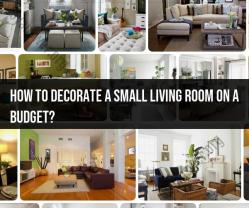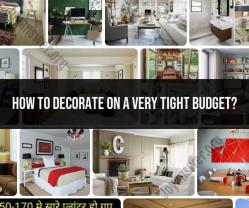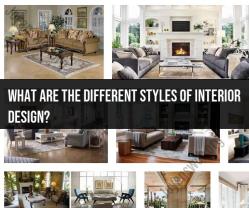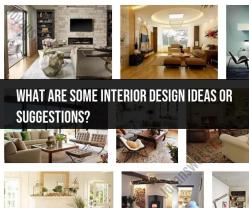What are some basic interior design tips?
Interior design can be both fun and challenging, especially for beginners. Here are some basic interior design tips to help you get started:
Define Your Style:
- Start by determining your personal style. Are you drawn to modern, traditional, eclectic, minimalist, or other styles? Understanding your preferences will guide your design choices.
Set a Budget:
- Determine how much you're willing to spend on your interior design project. This will help you prioritize expenses and prevent overspending.
Create a Plan:
- Develop a design plan that outlines your goals for each room. Consider the function of the space and how you want it to look and feel.
Choose a Color Palette:
- Select a color scheme that suits your style and preferences. Colors play a significant role in creating the atmosphere of a room.
Furniture Selection:
- Invest in quality furniture pieces that match your chosen style. Ensure that the scale and proportions of the furniture are appropriate for the room.
Layout and Space Planning:
- Arrange furniture and decor to optimize space utilization and create a comfortable flow. Consider the placement of focal points and traffic patterns.
Lighting:
- Incorporate a mix of lighting sources, including ambient, task, and accent lighting. Proper lighting enhances the functionality and mood of a room.
Wall Decor:
- Use artwork, mirrors, and wall hangings to add visual interest to your walls. Experiment with different arrangements, like gallery walls or a single statement piece.
Textiles and Fabrics:
- Choose textiles such as curtains, rugs, throw pillows, and upholstery that complement your color scheme and style. Textures can add depth to a room.
Accessorize Thoughtfully:
- Decorative accessories like vases, candles, cushions, and plants can enhance the overall look. Avoid clutter by selecting meaningful or visually appealing items.
Balance and Symmetry:
- Achieve balance in your design by distributing visual weight evenly. Balance can be achieved through furniture placement, color, and decor arrangement.
Personal Touch:
- Incorporate personal items like family photos, artwork, or souvenirs to add character and personality to your space.
Functionality:
- Prioritize functionality and comfort. Ensure that your design choices align with how you use the space on a daily basis.
DIY and Creativity:
- Don't be afraid to take on do-it-yourself (DIY) projects or upcycle existing items. Creative solutions can add uniqueness to your design.
Experiment and Learn:
- Interior design is a learning process. Experiment with new ideas, and don't be afraid to make changes or updates as your tastes evolve.
Seek Inspiration:
- Browse design magazines, websites, and social media platforms for inspiration. Create mood boards or Pinterest boards to collect ideas and references.
Professional Advice:
- If you're uncertain about your design choices or need help with more complex projects, consider consulting with an interior designer or decorator.
Remember that interior design is a creative and evolving process. Your home should reflect your personality and provide comfort and functionality. Start with these basic tips, and gradually build your skills and confidence in interior design.









